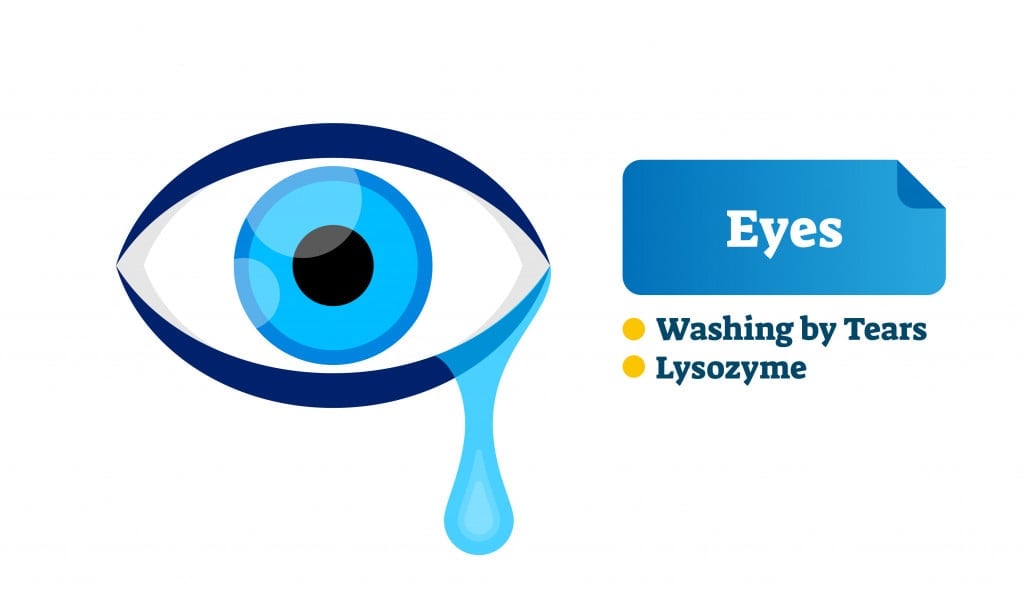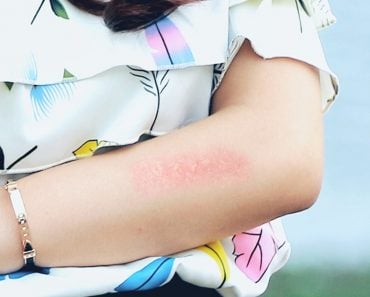Table of Contents (click to expand)
Essential and irreplaceable organs, such as the eyes and the brain, are subject to a limited amount of preservation from the body’s immune system. This is called their “immune privilege.”
For your immune system, the eyes have a giant ‘NO ENTRY’ written over them.
The immune system is the silent superhero of your existence. It shields you from countless foreign particles, the “germs” you encounter daily. And for those germs that manage to enter the body, the immune system goes into fight mode to eliminate them.
However, your immune system has no access to the eyes. For your white blood cells, your eyes might as well not exist. With that in mind, how do the eyes remain safe from pathogens? Why don’t our eyes constantly get infected?
Recommended Video for you:
The Normal Immune System And The Eye
Our eyes are exposed to a variety of foreign particles every day.
Unlike other parts of our body, the eyes are almost constantly exposed to an environment where the air is filled with dust and bacteria, and water is swimming with pathogens. Not to forget, how often do you rub your eyes with bacteria-coated fingers? It’s enough to make you sick… right?
The body’s natural response to anything foreign is inflammation and increasing the temperature of that area, but this strategy is bad for the human eye.
The eye is an extension of the brain, and both of these organs are primarily composed of neurons, which have a very limited capability to regenerate. Inflammation of the eye’s tissue will hinder vision, while increased temperature will cause tissue damage. Because the eyes cannot regenerate like other organs, these immune reactions could affect a person’s long-term sight.

What Is Immune Privilege?
To protect your vision, the human eye gets “immune privilege,” but what is this exactly?
Immune privilege is the privilege or license the body’s immune system gives to some organs, like the eyes and the brain. It limits the response of the immune system in those immune-privileged organs.
Think of immune privilege as “immunity from the body’s immunity”.

The phenomenon was first discovered by Sir Peter Medawar, who also coined the term. He observed that foreign tissue was not “rejected” by the body when grafted in the eye. “Not rejected” implies that the body’s immune system did not attack the transplanted tissue after identifying it as foreign.
We’ve since discovered other organs with immune privilege: the testes, placenta, and fetus.
Mechanisms Of Achieving Ocular Immune Privilege
How does the eye keep the immune system at bay?
The blood-eye barrier
This barrier acts as a “guard” for the eye. The retina and its blood capillaries form this barrier. The presence of this barrier physically restricts immune cells present in the blood from entering the eye.
Lack of direct lymphatic drainage
Lymph is a tissue fluid that contains white blood cells (WBCs). The fluid drains into the lymphatic tissue, such as your lymph nodes (tonsils are lymph nodes). The eyes, however, are devoid of direct lymphatic drainage. This means that the immune cells do not come in direct contact with the eye and, consequently, do not come into contact with any pathogens.
Immunosuppressive molecules
Immunosuppressive molecules limit or suppress the immune response of the body. It’s like the fuse system of our household, which is installed to protect us against our electricity supply. Such molecules are abundantly present in the eye, which helps sway the effect of the body’s immunity away from the eye.
The first two mechanisms initially suggested that the eye becomes ignorant of the presence of foreign antigens. However, the latest research proves that the eye’s immune system does acknowledge the antigen… it simply doesn’t respond as we might expect.
Imagine a white-colored ball floating in a bathtub. If some dye is poured into the surrounding water, it will also color the ball.
In the same way, the eye is surrounded by a fluid-like microenvironment that contains soluble immunosuppressive molecules, as mentioned above. Their presence affects the eye, thus ‘suppressing’ the normal immune response to any foreign particle in the eye.

However, If The Eye Has A Shield Against The Body’s Immune System, How Does It Protect Itself Against, For Example, A Bacterium?
That’s where antibacterial substances like lysozyme come into action. Lysozyme is an antibacterial substance that is released from the tear glands of our eyes. This is why your eyes become watery right after a dust particle or even an eyelash falls into it.
However, like everything, there’s a downside to this immune privilege of the eye. The immune privilege is easily circumvented when an excessively strong immune response is encountered. This may leave the privileged tissue at risk of collateral damage, as its natural defenses are more easily broken. In normal tissue, the immune system promptly deals with foreign antigens and restores normalcy. But that isn’t always straightforward when it comes to our eyes.
The eye may not have a separate immune system, but it does have a different one!
Conclusion
Sir Peter Medawar’s observation is why transplanting a healthy cornea (the eye’s outermost layer) can now be successfully achieved. Corneal transplants have a rate of being 90% successful without the hassle of tissue matching or taking immunosuppressive therapy.
In 2023, surgeons at a New York hospital transplanted an entire eye. This is a remarkable feat, as the eye is susceptible to rejection. The patient, an army veteran, Aaron James, received the transplant, and his eye is healing. Though he couldn’t see from that eye when the story made the news, doctors were optimistic he might regain some vision.
References (click to expand)
- Zhou, R., & Caspi, R. R. (2010, January 18). Ocular immune privilege. F1000 Biology Reports. Faculty Opinions Ltd.
- Niederkorn, J. Y. (2019, October 29). The Eye Sees Eye to Eye With the Immune System: The 2019 Proctor Lecture. Investigative Opthalmology & Visual Science. Association for Research in Vision and Ophthalmology (ARVO).
- Forrester, J. V., & Xu, H. (2012). Good news–bad news: the Yin and Yang of immune privilege in the eye. Frontiers in Immunology. Frontiers Media SA.
- Taylor, A. W. (2009, January 9). Ocular immune privilege. Eye. Springer Science and Business Media LLC.
- Ocular Immune Privilege - an overview | ScienceDirect Topics. ScienceDirect












